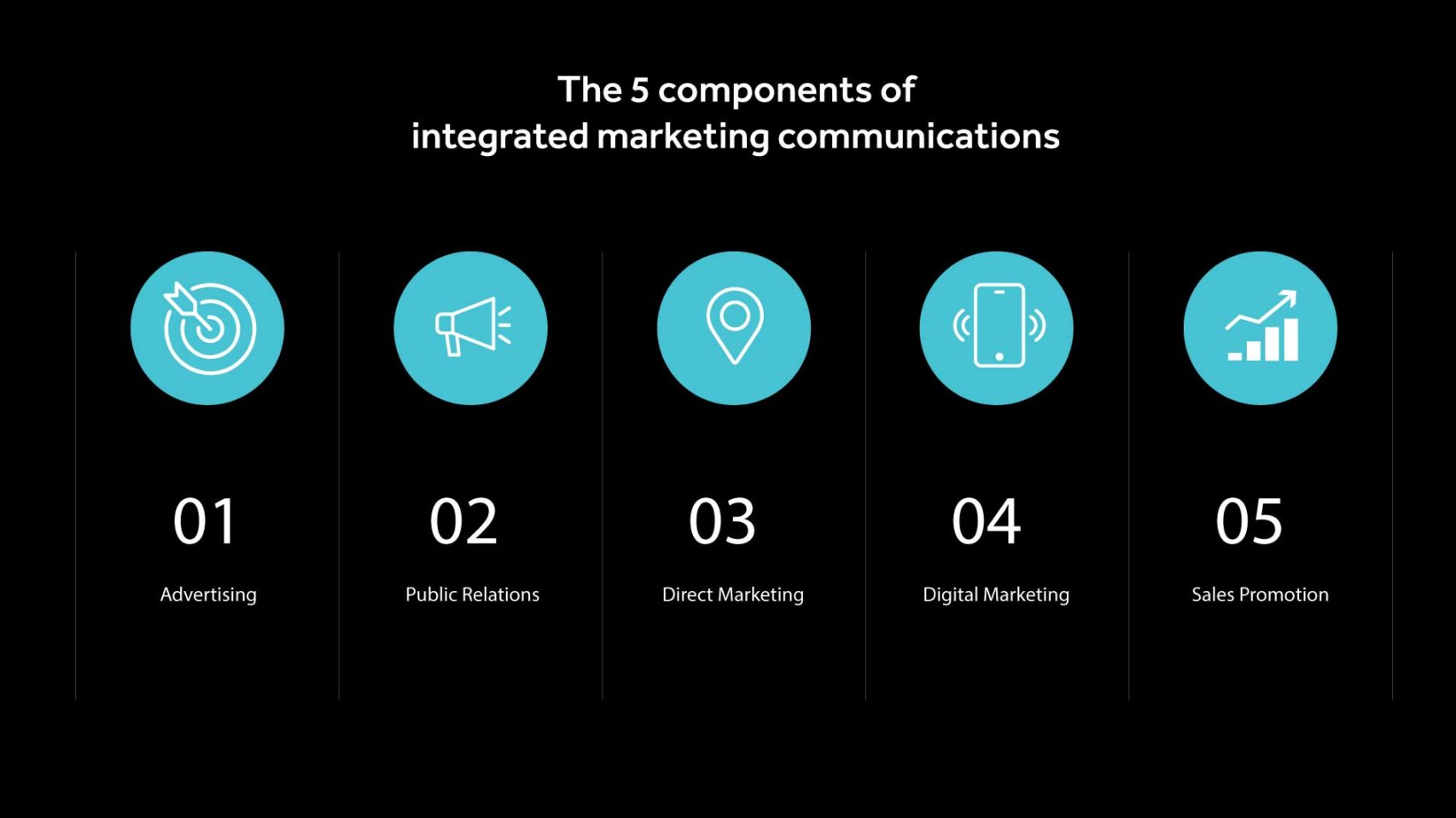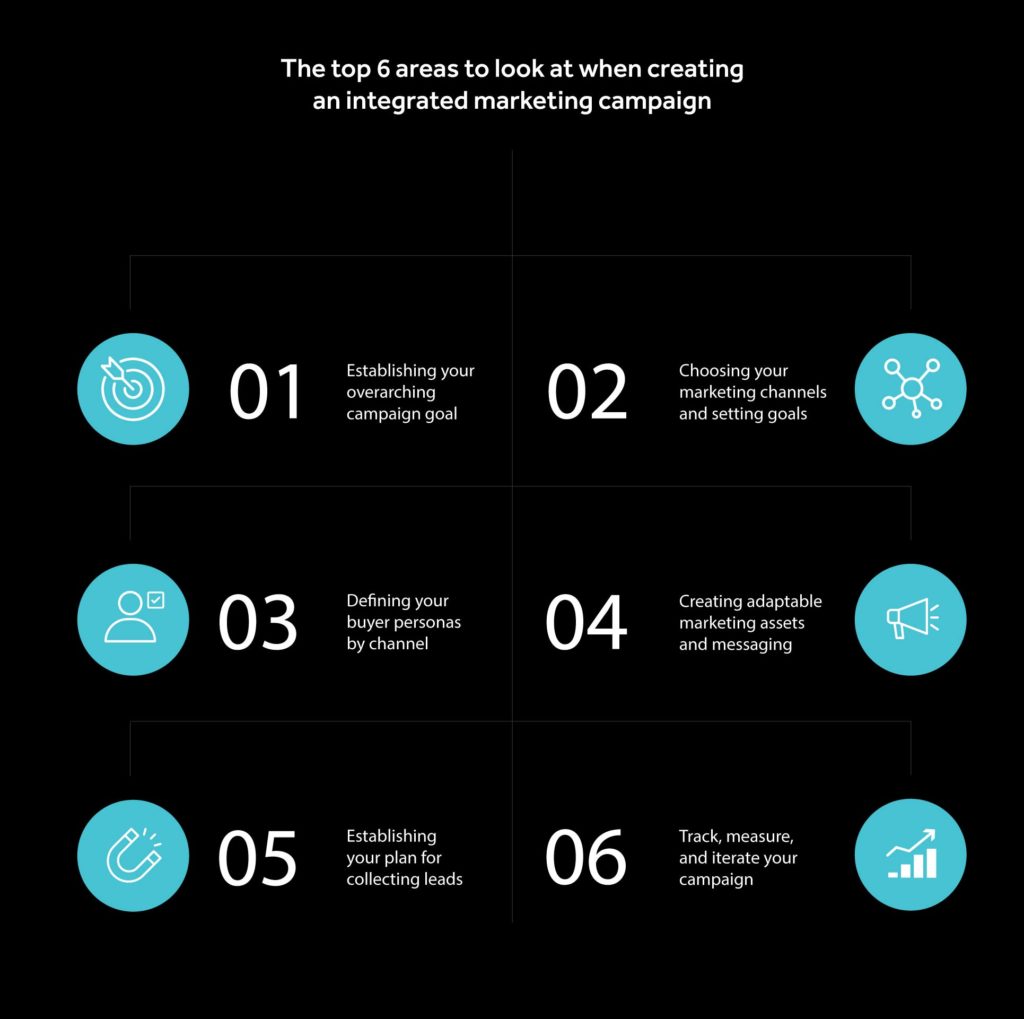What is integrated marketing communication: A comprehensive guide
In today’s fast-paced and ever-evolving business landscape, successful marketing requires a strategic approach that goes beyond traditional advertising methods. But what is integrated marketing communication? Integrated Marketing Communication (IMC for short) has emerged as a powerful strategy to help businesses effectively reach their target audience, build brand loyalty, and drive sustainable growth. In this comprehensive guide, we will delve deep into the world of IMC, exploring its components, goals, and the reasons behind its undeniable importance and effectiveness.
Download our Top 3 integrated marketing campaigns: ebook
What is integrated marketing communications in simple words?
Integrated Marketing Communication, or IMC, is a strategic approach to marketing that combines various communication channels and tools to deliver a consistent and unified message to the target audience. In simpler terms, it means that a company ensures all its marketing efforts work together seamlessly to convey a coherent brand identity and message to consumers.
“Integrated marketing is a vital strategy for brands that want to rapidly increase their market share” – Jim Carpenter, Orchard Director.
What Are the 5 Components of IMC?

Advertising
Advertising methods like TV, radio, print, and digital ads play a crucial role in IMC. These channels help create awareness and capture the attention of potential customers.
Public Relations (PR)
PR involves managing the company’s image and reputation through media coverage, press releases, and events. It helps build trust and credibility with the audience.
Direct Marketing
This component focuses on personalised marketing efforts, such as email marketing, direct mail, and telemarketing. It aims to establish a direct connection with potential clients.
Digital Marketing
In the digital age, online channels like social media, content marketing, SEO, and paid advertising are essential for IMC. They allow for precise targeting and interaction with the audience.
Sales Promotion
Sales promotions include tactics like promoting discounts, coupons, contests, and giveaways to incentivize immediate purchases. They can boost short-term sales and customer engagement.
These 5 areas form the backbone of our comprehensive guide on “What is integrated marketing communications”.
What Is the Main Goal of Integrated Marketing?
The primary goal of Integrated Marketing Communication is to create a consistent and unified brand image and message across all marketing channels. By doing so, clients can:
Enhance brand recognition
A consistent message makes it easier for customers to recognise and remember your brand.
Build trust and credibility
A unified brand image fosters trust among consumers, making them more likely to engage with your products or services.
Boost customer loyalty
When customers receive a consistent and positive experience from your brand, they are more likely to become loyal advocates.
Increase marketing efficiency
By coordinating efforts, IMC helps businesses allocate resources more effectively and avoid redundancy.
Check out our case studies and see some live examples of integrated marketing communications
Why Is Integrated Marketing Communication Important?
Consistency
IMC ensures that all communication channels convey a consistent message, reducing confusion among customers and prospects. This consistency builds trust and reinforces brand identity.
Cost-Efficiency
By integrating marketing efforts, businesses can eliminate redundancy and allocate resources more efficiently, resulting in cost savings.
Improved Customer Experience
IMC focuses on delivering a seamless and cohesive customer experience, which can lead to higher customer satisfaction and loyalty.
Competitive Advantage
Companies that effectively implement IMC are more likely to stand out in the crowded marketplace. They are better equipped to adapt to changing consumer behaviours and market trends.
Data-Driven Insights
IMC allows for the collection of valuable data from various channels, enabling businesses to make informed marketing decisions and refine their strategies.
Why Are Integrated Marketing Campaigns Effective?
Enhanced Message Recall
When consumers encounter a consistent message across multiple touchpoints, they are more likely to remember it. This increases the chances of converting leads into customers.
Comprehensive Audience Reach
IMC utilises various channels to reach a broader and more diverse audience. This inclusivity ensures that the brand message reaches potential customers wherever they are.
Reinforced Brand Identity
IMC reinforces the core values and identity of a brand, making it more memorable and relatable to consumers.
Improved Return on Investment (ROI)
With integrated marketing efforts, businesses can track the performance of each channel more effectively and allocate resources to those that provide the highest ROI.
Adaptability
IMC allows companies to adapt quickly to changes in the market and consumer behaviour. They can adjust their messaging and strategies across channels as needed.
The top 6 areas to look at when creating an integrated marketing campaign:

Establishing Your Overarching Campaign Goal
To answer the question “What is integrated marketing communications” we need to start at the beginning. The foundation of any integrated marketing campaign is a clearly defined goal. Before diving into the specifics of channels and tactics, you must have a clear understanding of what you want to achieve. Your overarching campaign goal should align with your business objectives. Are you aiming to increase brand awareness, generate leads, boost sales, or something else entirely? The more specific and measurable your goal, the easier it will be to tailor your campaign accordingly.
Choosing Your Marketing Channels and Setting Goals for Each One
Selecting the right marketing channels is a crucial step in crafting a successful integrated campaign. Start by researching where your target audience spends their time. Are they active on social media, reading blogs, or attending industry events? Once you’ve identified the relevant channels, set specific goals for each. For example, if you’re using social media, your goals might include increasing engagement rates, growing your follower count, or driving traffic to your website.
Defining Your Buyer Personas by Channel
Buyer personas are fictional representations of your ideal customers. However, it’s essential to remember that these personas may differ from one channel to another. Your audience on LinkedIn might consist of high-level executives, while on Instagram, it could be younger consumers seeking visual inspiration. Tailor your messaging, content, and tone to align with the unique characteristics and preferences of each persona on different channels.
Creating Adaptable Marketing Assets and Messaging
Flexibility is key in an integrated marketing campaign. Create marketing assets and messaging that can be easily adapted to suit different channels and buyer personas. This doesn’t mean sacrificing consistency but rather ensuring that your core message remains intact while being tailored to resonate with the specific audience on each platform. Consider various content formats, such as videos, infographics, and blog posts, to maximize engagement.
Establishing Your Plan for Collecting Leads
Lead generation is a common goal for many integrated marketing campaigns. To achieve this, you must have a well-thought-out plan for capturing and nurturing leads across your chosen channels. Use compelling calls-to-action, lead magnets, and landing pages to encourage visitors to share their contact information. Implement a robust CRM system to manage and track leads effectively, ensuring they receive relevant and timely follow-up communications.
Track, Measure, and Iterate Your Campaign
A successful integrated marketing campaign doesn’t end with implementation; it requires continuous monitoring and optimization. Use analytics tools to track the performance of your campaign across all channels. Measure key metrics such as website traffic, conversion rates, social media engagement, and email open rates. Regularly analyse the data to identify what is working and what is not. Then, iterate your campaign strategy based on these insights to improve results over time.
Creating an integrated marketing campaign is a complex but rewarding endeavour. By focusing on these seven key areas, you can set a solid foundation for your campaign’s success. Remember that integration is the cornerstone of your efforts, ensuring that your message remains consistent and resonates with your audience, no matter where they encounter it. With clear goals, well-defined personas, adaptable assets, and vigilant tracking, your integrated marketing campaign will be poised for success.
So, what is integrated marketing communication and why should you be considering it for your business?
We now live in a very fast-paced and dynamic world of marketing. Time and time again, Integrated Marketing Communication (IMC) proves to be a powerful tool for businesses seeking to create a unified and impactful brand presence. By combining various components and ensuring a consistent message, IMC not only enhances brand recognition but also builds trust, fosters customer loyalty, and drives long-term success. Embracing IMC as a fundamental strategy is essential for businesses looking to stay competitive and effectively engage with their target audience in today’s ever-changing marketplace.

